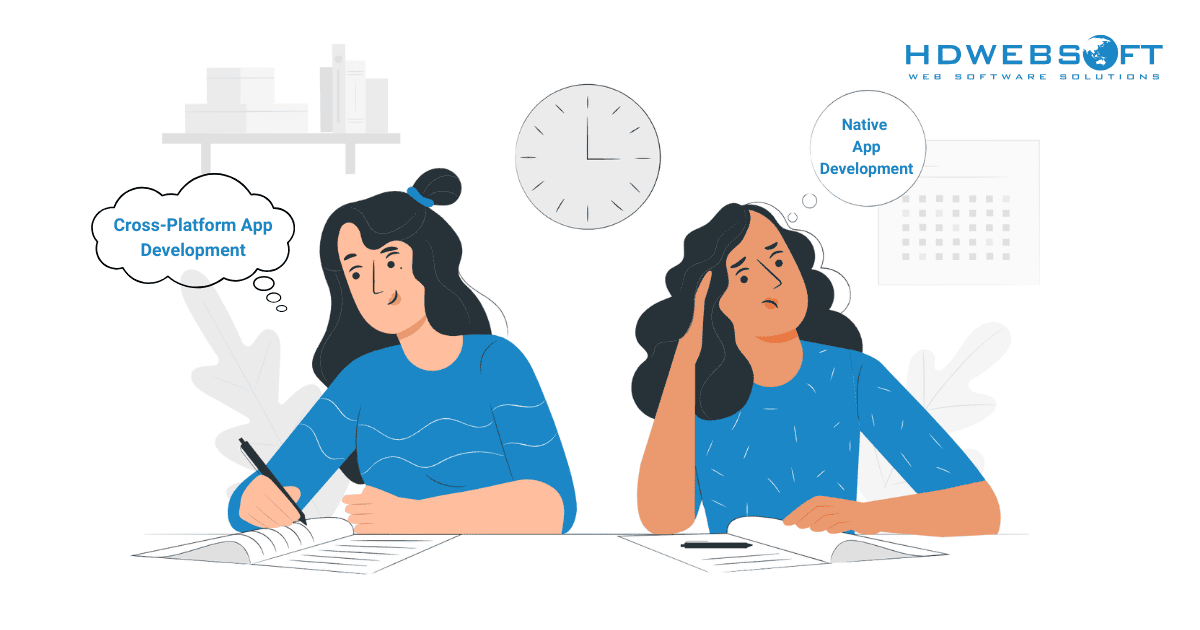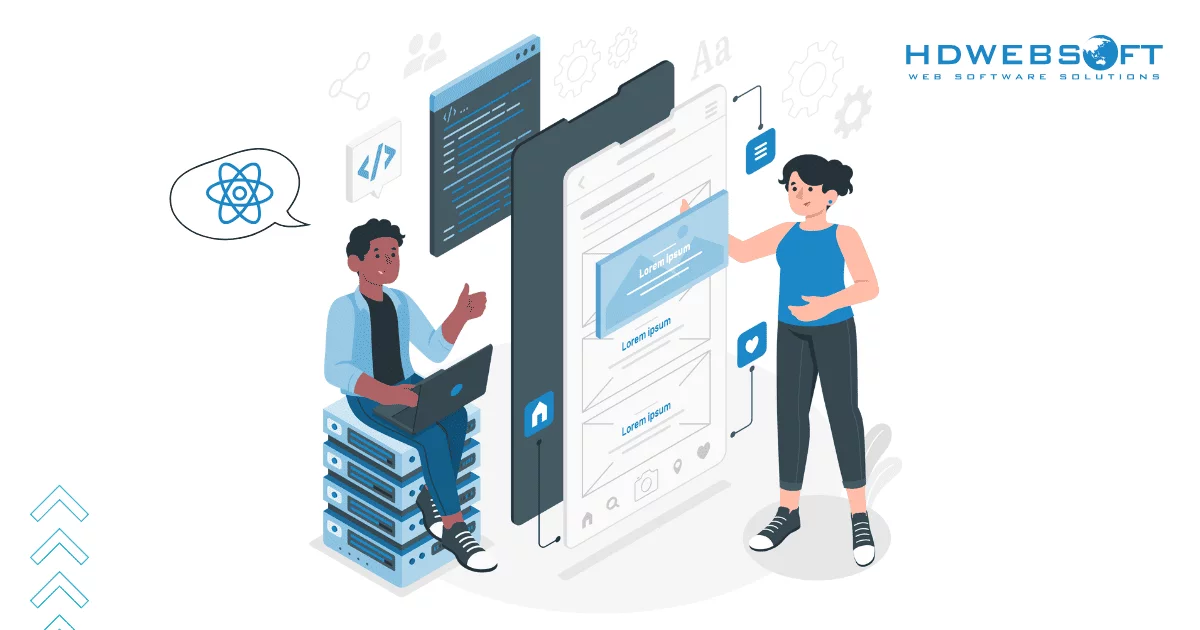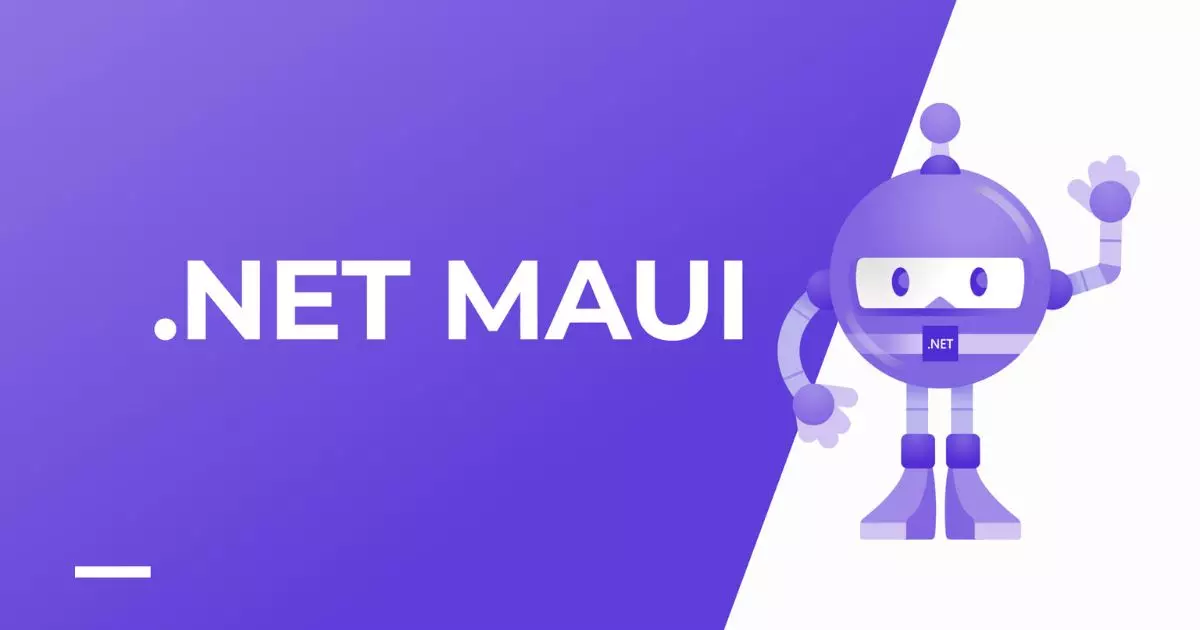
Top 5 Cross-Platform App Development Frameworks for 2025
In the ever-evolving software world, cross-platform app development has become a popular choice for developers aiming to maximize their reach. The ability to build apps that work seamlessly across different operating systems is not only cost-effective but also time-efficient. However, with numerous frameworks available, selecting the right one can be overwhelming.
In today’s article, we will explore the key aspects of cross-platform application development. Specifically, this includes its benefits, differences from native development, and the top frameworks to consider in 2025. By the end, you’ll have a comprehensive understanding of how to make an informed choice for your next project.
- 1) What is Cross-Platform App Development?
- 2) Cross-Platform App Development vs Native App: The Differences
- 3) Benefits of Cross-platform App Development
- 4) Popular Cross-platform App Development Frameworks
- 5) Choosing the Right Cross-platform App Development Framework for Your Software
- 6) Conclusion
What is Cross-Platform App Development?

In one of the previous blogs, we have already discussed the definition of cross-platform development. Let us remind you once again.
Cross-platform app development is the process of creating applications that can run on multiple operating systems using a single codebase. Unlike native app development, which requires platform-specific coding, cross-platform solutions streamline the development process. That way, it’s easier for businesses to launch apps across various devices.
Multiple-platform app development has gained significant popularity in recent times. Many mobile app development companies favor it for optimizing their projects. Its flexibility and efficiency enable developers to create impressive apps with ease. By leveraging advanced technologies, cross-platform application development firms accelerate production timelines and deliver superior-quality applications.
Cross-Platform App Development vs Native App: The Differences

Here are some key distinctions between multiple-platform app development and native app development:
- Performance: Native applications deliver better performance as they are tailored specifically for a single platform. In comparison, cross-platform apps may have slower performance due to their generalized approach.
- User Experience: Native apps excel in providing a seamless user experience optimized for their platform. On the other hand, cross-platform app development often struggles to achieve the same level of refinement, especially when replicating platform-specific features.
- Development Time: Multiple-platform application development is quicker since a single codebase can function across multiple platforms. Conversely, native app development takes longer because each platform requires its own dedicated codebase.
- Cost: Using a shared codebase in cross-platform development reduces resource usage and overall costs. Meanwhile, native apps require separate codebases, leading to higher development expenses.
Further reading: React Native or Native App for your Mobile Application.
Benefits of Cross-platform App Development
These days, businesses are always on the lookout for efficient ways to deliver apps that cater to diverse audiences. Then, cross-platform development has emerged as a game-changer, offering several advantages that make it a popular choice. Here, we’ll explore its key benefits and how it can elevate your app strategy.
Reduced Development Time and Cost
One of the most significant advantages of cross-platform app development is its efficiency in terms of time and budget. More specifically:
- Single Codebase: Developers can create one codebase that works seamlessly across multiple platforms. Consequently, this eliminates the need to build separate apps for Android and iOS.
- Faster Turnaround: With fewer resources and less time spent on coding, businesses can launch their apps more quickly.
- Cost-Effective: Maintaining one codebase instead of multiple significantly reduces development costs. Hence, it becomes a viable option for startups and small businesses.
In essence, businesses can save valuable time and allocate resources to other critical areas like marketing or user acquisition.
Consistent User Experience
Consistency plays a pivotal role in keeping users engaged and satisfied across devices. Based on that fact, you can gain the following benefits.
- Uniform Design: Cross-platform frameworks ensure that your app looks and feels the same, regardless of the operating system.
- Frictionless Functionality: Users enjoy the same features and performance no matter which device they use.
This uniformity of cross-platform app development enhances the user experience. In addition, it reinforces your brand’s identity, helping it stand out in a crowded marketplace.

Cross-platform app development will make sure that every user has the same experience.
Wider Reach and Market Penetration
In today’s global economy, reaching a diverse audience is more important than ever. When developing cross-platform applications, you have the opportunity to engage a broader audience. How is this possible?
- Reach Various Platforms: cross-platform application development ensures your application functions smoothly on iOS, Android, web, and desktop. Regardless of the device your audience prefers, they can access your app effortlessly.
- Expand Market Presence: By targeting diverse user groups across multiple platforms, you can attract a broader audience. This approach boosts your market share and unlocks greater revenue opportunities.
This broader reach translates into higher downloads and better user engagement. Ultimately, it increases revenue potential.

Wider user pool means more a better chance for increased profitability.
Simplified Maintenance and Updates
Maintaining an app can be challenging, but a multiple-platform development solution simplifies the process significantly.
- Streamlined Maintenance: With cross-platform app development, developers only need to update a single codebase. Therefore, it’s easier for them to fix bugs or add new features.
- Faster Rollouts: Updates and patches can be deployed simultaneously across platforms. That way, all users can enjoy the latest version of your app.
- Lower Maintenance Expenses: With a single codebase to manage, there’s no requirement for separate teams to update each platform individually. This approach significantly reduces maintenance costs.
Access to Native Features
Despite its cross-platform nature, modern frameworks allow developers to integrate native-like features smoothly. What advantages can you expect from it?
- Utilize Device Features: Incorporate diverse device functionalities into your applications, such as cameras, GPS, and sensors, to enable users to complete tasks more effectively.
- Improved Functionality: Advanced features enhance the potential of your cross-platform apps. Meanwhile, platform-specific tools deliver a more immersive and enriched user experience.
By combining the best of both worlds, cross-platform app development ensures users enjoy functionality without compromise.
Popular Cross-platform App Development Frameworks
The demand for applications that work on multiple platforms continues to rise. With several frameworks available, it’s essential to understand their features, strengths, and drawbacks to choose the right one for your project. Let’s explore some of the most popular frameworks for cross-platform app development in 2025.
Flutter
Developed by Google in 2017, Flutter is a top-tier framework for multiple-platform development. Developers favor it for creating high-performance, visually striking applications across multiple platforms. With its robust features, Flutter enables seamless app development for iOS, Android, web, and desktop.
According to a report, 46% of developers worldwide reported using Flutter for cross-platform app development, making it the most popular framework globally.
Key Features
- Hot Reload: With this feature, developers can instantly view changes made to the app without the need for restarting. This feature significantly accelerates the Flutter app development process.
- Customizable UI: Flutter offers a variety of widgets that developers can tailor to design visually appealing interfaces.
- Native Performance: By directly interacting with the platform’s rendering engine, Flutter ensures smooth, responsive, and high-performance applications.
- Cross-Platform Compatibility: Thanks to a single codebase, Flutter allows apps to be deployed effortlessly across multiple platforms.
- Declarative UI: The declarative programming style in Flutter simplifies the process of creating user interfaces.
- Built-in Graphics Engine: Flutter’s efficient rendering capabilities ensure that your apps perform seamlessly and maintain a polished appearance.
Benefits and Drawbacks
Benefits:
- Rapid Development: Tools such as hot reload and an efficient workflow significantly speed up the cross-platform app development process.
- Attractive UI: Flutter provides an array of design systems and customizable widgets, allowing you to build visually appealing app interfaces with minimal effort.
- Native-Like Performance: Apps created with Flutter deliver a performance comparable to that of native applications, offering smooth functionality.
- Expansive Community: With a large and ever-growing community, Flutter provides ample resources and support, ensuring you’re not on your own.
- Cross-Platform Efficiency: A single codebase allows you to launch your apps across multiple platforms effortlessly.
Drawbacks:
- Bigger App Size: Apps built with Flutter tend to be larger compared to native applications.
- Higher Learning Curve: Developers must first master Dart to work with Flutter, which can be time-consuming for those new to the language.
React Native

Next, React Native is a widely used open-source framework for cross-platform app development. Created by Facebook, it streamlines the process of developing apps that deliver a native-like experience on both iOS and Android.
By utilizing JavaScript, React Native enables developers to create high-performance, interactive apps with speed and efficiency. Its flexibility and fast development capabilities make it a preferred choice among developers.
Standout Features
- Component-Based Architecture: React Native’s cross-platform framework divides the app interface into modular, reusable components. Overall, it’s easier to build and maintain apps.
- Hot Reloading: A game-changer for developers! You can instantly view changes made to your code without restarting the app.
- Native Performance: React Native relies on actual native components, ensuring smooth functionality that closely resembles a native app.
- Cross-Platform Compatibility: One codebase works for both iOS and Android, streamlining development and saving time.
- Google Maps Integration: Easily integrate Google Maps into your app, making it the perfect option for location-based applications.
Pros and Cons
Pros:
- Quick Development: A major benefit of cross-platform app development is the rapid development process, and React Native is no exception.
- Impressive Performance: React Native apps offer performance that closely matches native applications.
- Strong Community Support: With a large and active community, developers gain access to ample resources and assistance.
- Cost Efficiency: React Native app development is budget-friendly, and the ability to reduce development time further cuts costs.
- Cross-Platform Usability: A single codebase can be used across multiple platforms, ensuring consistent performance on various devices.
Cons:
- Greater Learning Effort: Before diving into React Native, it’s necessary to get comfortable with JavaScript and React.
- Possible Performance Limitations: React Native apps may not deliver the same level of performance as native apps for more demanding tasks.
- Platform-Specific Obstacles: Certain features may still need custom coding for specific platforms.
Ionic
Ionic is based on web technologies such as HTML5, JavaScript, and CSS. This framework leverages AngularJS and a Cordova wrapper to build interactive apps that feel native.
It supports progressive web apps (PWAs), mobile apps, and desktop applications, offering a complete cross-platform app development solution. It’s no surprise that Ionic is considered one of the leading frameworks for multiple-platform application development.
Core Features
- Open-source Front-end Framework: Ionic is open-source, providing developers with the flexibility to modify the code. As a result, they can tailor their apps to meet specific requirements.
- Mobile OS-specific UI Framework: Ionic provides a vast collection of pre-designed UI components optimized for mobile platforms, making it easy to build cross-platform apps.
- AngularJS-based: As an AngularJS-based framework, Ionic enables developers to incorporate dynamic features and craft interactive user interfaces.
- Cordova Plugins: Ionic works seamlessly with Cordova plugins, allowing access to native device functionalities.
Advantages and Disadvantages
Advantages:
- Native-like User Interface and Performance: Ionic apps replicate the appearance and performance of native apps, providing a polished user experience.
- Open-source: Being open-source, developers can modify and optimize the codebase, resulting in faster development.
- Built on AngularJS: By leveraging AngularJS, developers can enhance HTML with dynamic features to create more complex applications.
- Access to Native Device Features: Thanks to seamless integration with Cordova plugins, this cross-platform app development framework enables access to key native device functionalities.
- Ideal for Progressive Web Apps: Ionic excels in developing PWAs, making it a strong contender compared to React Native.
Disadvantages:
- App Size: Ionic apps tend to have larger file sizes compared to native apps. Thus, it poses challenges when submitting to app stores.
.NET MAUI (Multi-platform App UI)

MAUI is a cutting-edge cross-platform framework created by Microsoft. It enables developers to build native applications for mobile, desktop, and tablets across iOS, Android, Windows, and macOS using a unified approach.
Moreover, powered by C# and XAML, MAUI serves as a replacement for Xamarin.Forms. Therefore, it optimizes cross-platform development by using a single codebase for multiple platforms.
Key Features
- Cross-Platform App Development: Develop apps for various platforms using a shared codebase.
- Native Performance: Leverages platform-specific APIs to deliver high-performance applications.
- Hot Reload: Speeds up the development process by instantly reflecting code changes without restarting.
- Rich UI Toolkit: Offers a wide array of UI components and tools for creating responsive and visually appealing interfaces.
- Single Project System: Simplifies project management by unifying code and resources within a single project structure.
Upsides and Downsides
Upsides:
- Consistent Development Workflow: Utilize C# and XAML for all platforms. Thus, it makes sure of a smooth and efficient development experience.
- Robust Support and Community: Backed by Microsoft, .NET MAUI has access to a growing developer community and comprehensive resources.
- Optimized Performance: Produces apps with near-native performance, making it ideal for performance-focused projects.
- Enhanced Productivity: Features like hot reload and simplified project structure reduce development time significantly.
Downsides:
- New and Evolving Framework: As a relatively recent technology, .NET MAUI is still maturing and may face stability challenges.
- Learning Requirements: Developers need strong proficiency in C# and XAML to work effectively with this framework.
- Platform-Specific Limitations: Although it minimizes platform-specific coding, some advanced features may still require additional customization for specific platforms.
Sencha Touch
If you’re searching for a top-tier cross-platform development framework for JavaScript, consider Sencha Touch. It enables the creation of mobile and web applications using HTML5 and JavaScript.
Known for producing high-quality and visually engaging apps, Sencha Touch stands out as one of the most popular frameworks for cross-platform app development.
Core Features
- Native-Like UI: Built-in themes designed for various platforms and native-like components elevate the app’s appearance.
- Data Management Package: A flexible data package simplifies managing data from multiple sources efficiently.
- Cordova Integration: Smooth integration with Cordova allows access to device-specific features, enhancing app functionality.
- Extensive UI Components: An expansive library of customizable UI components ensures responsive and visually appealing interfaces.
- Code Reusability: The framework supports backward compatibility, enabling you to reuse and update existing codebases for future framework versions.
Merits and Demerits
Merits:
- Cross-Platform Compatibility: Developers can utilize a single codebase to create apps that run across various platforms.
- Comprehensive UI Library: A vast array of pre-designed components speeds up the design process while allowing customization for unique app behaviors.
- Optimized Performance: Leveraging hardware acceleration ensures smoother animations and transitions for an improved user experience.
Demerits:
- Performance Challenges: Despite optimization, apps may fall short of the speed and responsiveness of native solutions.
- WebView Dependence: Reliance on WebView for rendering can lead to slower load times and reduced performance in some cases.
Choosing the Right Cross-platform App Development Framework for Your Software
Selecting the right framework for cross-platform app development is a crucial decision that can significantly impact your project’s success. With various options available, each offering unique features and benefits, it’s essential to evaluate your specific needs and goals. Let’s dive into the key factors to consider when choosing the best framework for your software.
Understand Your Project Requirements
Before anything else, define your app’s primary goals and features. Are you building a small-scale app or a complex, enterprise-grade solution? For example:
- If performance and responsiveness are critical, you might prioritize frameworks like Flutter or React Native.
- For apps requiring seamless integration with enterprise systems, .NET MAUI could be a better choice.
Taking time to map out your requirements will guide you toward a framework that aligns with your vision of a cross-platform app development solution.

Maping out your requirements clearly always make your cross-platform app development process smoother.
Consider Your Team’s Expertise
Your development team’s familiarity with programming languages and technologies can greatly influence your choice.
- If your team has web development experience, Ionic or React Native may feel more natural due to their JavaScript roots.
- For teams proficient in C#, .NET MAUI might be the most efficient option.
In the long run, choosing a framework that aligns with your team’s strengths can save time and resources during development.
Evaluate Performance Needs
Not all frameworks perform equally, especially for apps with heavy animations or high user engagement.
- Flutter is renowned for its near-native performance and smooth UI.
- React Native also delivers strong performance but may require additional work for resource-intensive apps.
If performance is a top priority, look for benchmarks and real-world case studies to assess how a framework performs under load.
Analyze Community Support and Resources
A thriving community ensures you’ll have access to tutorials, plugins, and troubleshooting assistance for your cross-platform app development. Frameworks like Flutter and React Native have large, active communities, making it easier to resolve issues and find learning resources.
In contrast, less popular frameworks like Sencha Touch may lack the same level of support, which could slow development progress.

It’s important to consider the help from community support before starting your cross-platform app development.
Factor in Cost and Licensing
Budget constraints are always a consideration. Some frameworks are open-source and free, while others, like Sencha Touch, may require paid licenses.
- Open-source frameworks such as Flutter and React Native are ideal for startups or budget-conscious projects.
- If enterprise-grade features are essential, a paid framework might offer the specialized tools and support you need.
Test for Scalability and Flexibility
Your cross-platform app development solution’s future growth is another critical aspect to evaluate. If you plan to scale or add new features down the line, choose a framework that supports scalability.
- .NET MAUI is excellent for apps that need to grow alongside your business.
- Flutter offers extensive libraries and tools to accommodate evolving needs.
Assess Native Feature Access
Certain frameworks provide more direct access to native device features than others. For instance, React Native and Flutter may require third-party plugins for the same functionality.
Depending on your app’s complexity, prioritize a framework that simplifies integration with device-specific features.
Prototype and Experiment
When in doubt, build a small prototype using a couple of frameworks to test their capabilities. This hands-on approach will give you valuable insights into ease of use, performance, and compatibility with your project goals.
Conclusion
Choosing the right cross-platform frameworks is essential for building high-performing apps. Not sure where to start? Let HDWEBSOFT’s expert mobile app development services guide you!
HDWEBSOFT is a trusted name in outsourced cross-platform app development. We’ve successfully supported businesses worldwide in creating top-tier cross-platform applications. With a team of experienced cross-platform app developers, we deliver seamless solutions tailored to your needs.
What’s even better? Our offshore development services are both cost-effective and high-quality, ensuring your budget stays intact without compromising excellence. Partner with HDWEBSOFT to experience unparalleled results!









